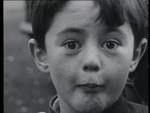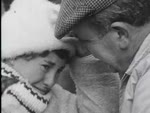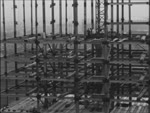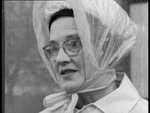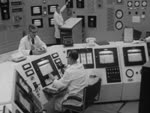GREAT SCOT - MARY SLESSOR
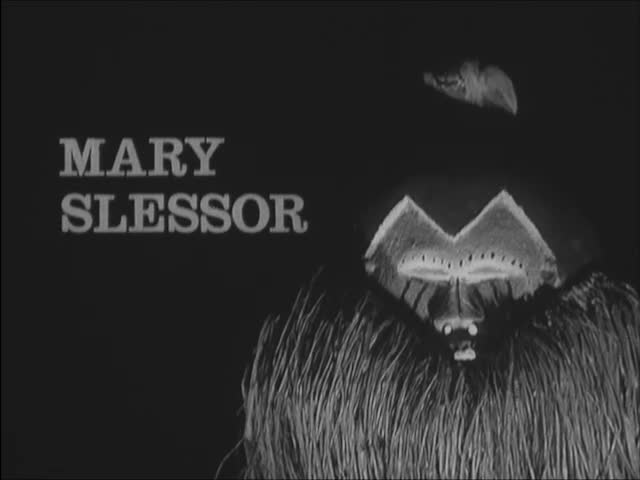
This video is not available to view remotely
Full length video - onsite only
Please read Understanding catalogue records for help interpreting this information and Using footage for more information about accessing this film.
Title: GREAT SCOT - MARY SLESSOR
Reference number: 0804
Date: 1965
Production company: Grampian Television
Sound: sound
Original format: 16mm
Colour: bw
Fiction: non-fiction
Running time: 25.26 mins
Description: The life and times of Church of Scotland missionary Mary Slessor. Her work in Africa and the lives she saved through religion and hospital care.
Credits:
designed by Eric Mollart
presented by James Buchan.
Shotlist: Credits [superimposed over shot of African traditional mask] (.27); James Buchan in studio describes how the Church of Scotland missionary Mary Slessor saved the life of an African woman in Nigeria in 1889 after she had been sentenced to death for giving food to a man in the absence of her husband (2.51); Page in her Bible on which she wrote "God and one are always a majority". (3.02); Buchan continues to relate her story giving details of the lives she saved (5.32); Still of African people in village (5.54); Buchan describes how Mary would have lived (6.46); Recording her voice as she recited the parable of the Prodigal Son in local language. Still of Mary standing with local children (7.04); Buchan reads extracts from newspaper cuttings by a reporter who met Mary a few years before her death (8.57); Still of Mary before she went to the Missions (9.11); With the aid of a map Buchan describes the geographical situation of the place where she lived and worked (10.17); Still of Mary as before, followed by one taken in 1912 after 36 years of service (10.30); Buchan shows on the map all the stations set up by Mary, single-handedly (11.40); Shots of the Queen laying a wreath on Mary's grave in 1956 on her visit to Nigeria (11.59); Aerial view of area where Mary worked (12.03); Fishermen at river (12.10); Women at the water's edge (12.12); Shots of traditional masks, musicians, African dancing (12.37); Monument erected to Mary Slessor (12.43); Shot ot headstone (13.01); Buchan describes Mary's upbringing in Aberdeen and Dundee and reads from one of the first letters she wrote home from Africa (14.20); Shot of the letter (14.30); Buchan continues to relate Mary's story (17.15); Photograph of Mary with a local chief and an African woman who saved her life three times (17.36); Photograph of the house which was built for her and then turned into a hospital at a later date (18.54); Photograph of a hut similar to the one in which Mary would have lived most of the time (19.13); Buchan reads from letters from the District Commissionaire, Charles Partridge, who governed the area when the British moved in, 24 years after Mary first arrived (1944); Shot of the letter (20.05); Shot of Buchan (20.10); Another shot of the letter (20.35); Buchan reads aloud from another letter (20.54); Shot of this letter (21.57); Buchan concludes the story of Mary Slessor with details of her death in January 1915 and shows some of the possessions she left behind, including a pair of spectacles and her diary (25.43); End credits [superimposed over shots of modern Africa] (27.02)

